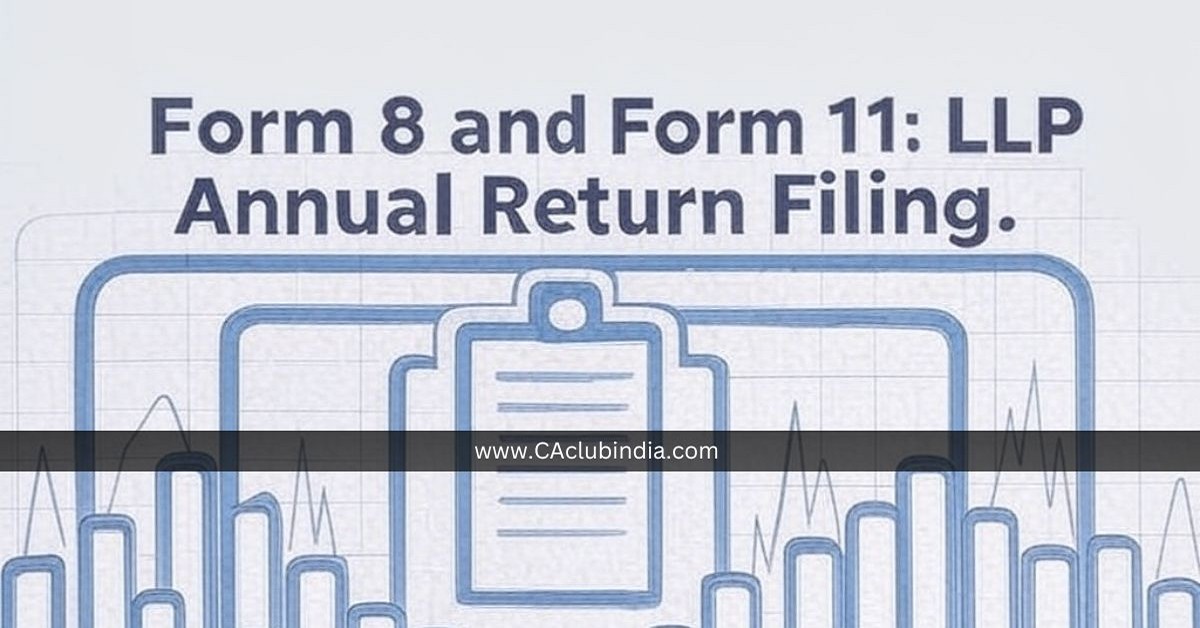For each Limited Liability Partnership (LLP) in India, LLP Annual Return Filing isn't only a statutory requirement but an essential element of enterprise compliance. The two important forms used in the filing are Form 8 and Form 11, each serving a whole different purpose.
This article will help in understanding more about LLP Form 8 and Form 11 for annual returns filing.

What is Form 11?
Form 11 is the Annual Return that every LLP must file with the Registrar of Companies (ROC) each year. It carries details of the companions, their contributions, and adjustments, if any, during the financial year.
- Due Date: 30th May of each year
- Penalty: 2 to 12 times the regular fee, depending on the number of days that are delayed
What is Form 8?
Form 8 is the Statement of Account & Solvency. It displays the financial role of the LLP, inclusive of a declaration of the solvency and correctness of accounts.
- Due Date: 30th October of every year
- Penalty: 2 to 12 times the regular charges, depending on the number of days that are delayed
Key Benefits of Timely LLP Annual Return Filing
- Avoid hefty consequences and legal notices
- Maintain criminal compliance with ROC
- Enhance authority for loans and contracts
- Ensure transparency
Documents Required
- LLP agreement
- Statement of bills
- Partner information
- Digital Signature Certificate (DSC) of precise partners
Important Factors to Keep in Mind
- Both forms are important, although there's no business activity during the year.
- Ensure that money owed are audited if the once a year turnover exceeds 40 lakh or contribution exceeds ₹25 lakh.
- Filing must be carried out with the MCA portal and DSC.
Conclusion
Filing Form 8 and Form 11 under LLP Annual Return Filing is essential for each LLP to stay in correct legal status. Non-compliance can result in massive fines and disqualification of partners.






 CAclubindia
CAclubindia


